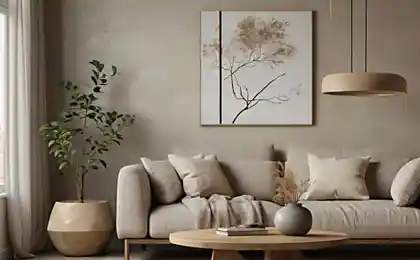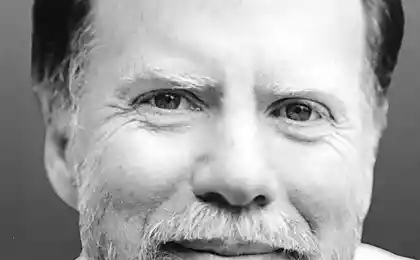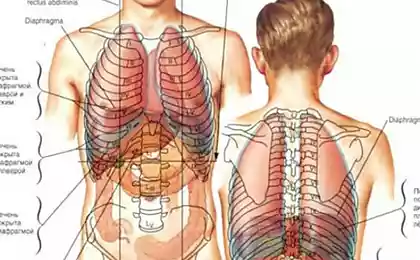249
What is an emotional connection with things and how to get rid of it

A significant part of human actions is determined by emotions, so many problems can not be solved if only logic is applied. This is especially evident in our attitude towards the material objects that surround us every day. Why an old T-shirt, a shabby book or a souvenir from a trip can elicit such deep feelings? And what do you do when these emotional connections turn into heavy chains that prevent you from moving forward?
The Nature of Emotional Attachment to Things
The human brain is designed in such a way that it easily creates associative connections between material objects and memories, people, periods of life. Neurobiological studies show that when you interact with things that are important to you, the same areas of the brain are activated as when you interact with social interactions. In other words, at the biological level, we often don’t make much difference between our relationships with people and our relationships with things.
Types of emotional connections with objects
- Sentimental attachment Things as keepers of memories and emotions (photos, gifts, souvenirs)
- Identity attachment objects as an extension of the personality (professional instruments, collections)
- Compensatory attachment Things as a replacement for emotional needs (shopaholism, hoarding)
- Secure attachment Objects as symbols of stability and protection (“just in case”)
Psychological research shows that people who experience periods of instability or loss tend to form stronger emotional bonds with material objects. Objects become anchors of psychological stability in a world of constant change. Professor Russell Belk of the University of York calls this phenomenon the “expanded self” – when personal belongings become an integral part of a person’s self-identification.

When attachment becomes a problem
Emotional connection to things is absolutely natural and in many cases healthy. However, there is a clear line beyond which such attachment begins to negatively affect the quality of life. Many of us live surrounded by hundreds and thousands of objects, most of which have not been used for years, but occupy not only the physical space of our homes, but also the mental space of our thoughts.
Signs of an unhealthy emotional connection to things:
- You experience severe discomfort or anxiety at the thought of parting with things
- Your living space is filled with items you haven’t used in years.
- You keep things “just in case” even if it hasn’t happened in the last 5-10 years.
- Making the decision to throw away or transfer an object causes disproportionate emotional strain.
- You feel guilty about things as if they were living beings.
Excessive attachment to material objects can be a symptom of deep psychological processes. According to research published in the Journal of Consumer Psychology, the urge to surround oneself with things is often associated with unconscious fears of loss of control, loneliness, or death. Things create the illusion of permanence in an unstable world.
Strategies for Liberating Emotional Dependence
The process of liberation from excessive emotional attachment to things is not just a physical cleansing of space, but also a deep psychological work. It is important to approach this process with self-compassion and understanding that change does not happen overnight.
Practical methods of liberation from emotional connection with things:
- Method of gradual distance. Place the hard-to-leave item in a box and remove it from view for one month. At the end of the period, evaluate how often you think about it and whether you really need it.
- Photography techniques. Take high-quality photos of significant items before you part with them. Photography will preserve the memory of a thing, while occupying much less physical space.
- Method of transformation. If an item is of particular importance to you, consider transforming it into something more functional (e.g. making a patchwork blanket out of an old T-shirt).
- Practice of informed questions. For each thing, ask yourself the questions: “What exactly connects me with this subject?”, “What emotional need does it satisfy?”, “Can this need be met in another way?” ?
- The ritual of gratitude and farewell. Before parting with a thing, thank it for its service and consciously let it go along with associated emotions.
Neuropsychologists note that getting rid of things activates the same areas of the brain as physical pain. This explains why parting with objects can be such a painful experience. However, as with physical exercise, after a period of discomfort comes relief and a new sense of freedom.

Cultural and Philosophical Aspects of Attitude to Things
Interestingly, different cultures exhibit radically different approaches to dealing with material objects. For example, in Japanese philosophy there is the concept of “mono-no avare” – a sense of the beautiful transience of objects and the acceptance of their temporary nature. The Scandinavian practice of “death cleaning” suggests regularly getting rid of unnecessary things, so as not to leave this task to their loved ones after death.
Philosophical concepts that help to rethink the attitude to things:
- The Buddhist Concept of Impermanence Acceptance of the temporal nature of all things and phenomena
- Stoicism The separation of what is in our power and what is outside it.
- Minimalism Focus on the essential and avoid excessive
- The concept of “sufficiency” Determination of the personal threshold of saturation with material goods
The American psychologist Barry Schwartz in his book “The Paradox of Choice” demonstrates how excess of things and opportunities not only does not make us happier, but often leads to more stress and dissatisfaction. Studies show that people who practice mindful consumption and regularly dispose of excess items, on average, report higher levels of subjective well-being.
Practical recommendations for everyday life:
- Entry-exit ruleFor every new thing you buy, get rid of one old thing.
- 30 Days TechniqueWait 30 days before buying a non-essential purchase to see if you really need it.
- Regular audit of thingsReview your items once a season and evaluate their importance.
- Giving practicesIf something is valuable to you but not used, find someone who really needs it.
- Digital minimizationTranslate physical memories (photos, letters) into digital format
Conclusion: The Path to Emotional Freedom
Liberation from emotional attachment to things is not a momentary action, but a continuous process of rethinking one’s relationship with the material world. It is important to remember that the purpose of such liberation is not to give up things altogether, but to strike a healthier balance where things serve us, not us.
Psychologists emphasize that the process of getting rid of emotional dependence on things is often accompanied by periods of discomfort and resistance. This is an absolutely normal brain response to changing established patterns. However, after overcoming this barrier, many people note not only relief from the physical cleansing of space, but also a deep sense of emotional liberation.
Ultimately, a healthy relationship with things is the ability to appreciate them without being attached; to use them without becoming addicted; and to part with them when the time comes, keeping gratitude for having them in your life.
Glossary of terms
Emotional attachment to things
A psychological state characterized by the formation of a stable emotional connection between a person and a material object that goes beyond the functional value of the object.
Extended Self (Extended Self)
A concept developed by Russell Belk that describes the process by which people view their things as an extension of their own identity.
Mono-no avare
Japanese aesthetic concept, describing the feeling of the beautiful transience of everything that exists, including material objects.
Compensatory consumption
A pattern of purchasing things to make up for emotional deficits or to compensate for psychological needs not otherwise met.
Minimalism
Philosophy and way of life based on the conscious limitation of the number of things to the necessary minimum in order to liberate physical and mental space.
The paradox of choice
A psychological phenomenon described by Barry Schwartz, in which increasing the number of available options (including material goods) does not lead to increased satisfaction, but, on the contrary, can reduce the quality of life.
Death cleaning (Döstädning)
The Scandinavian practice of systematically getting rid of unnecessary things during life, so as not to leave this task to loved ones after death.
The Internet is dead, long live the Internet: why the usual web will soon disappear
10 Jewish Laws on Earning Money























